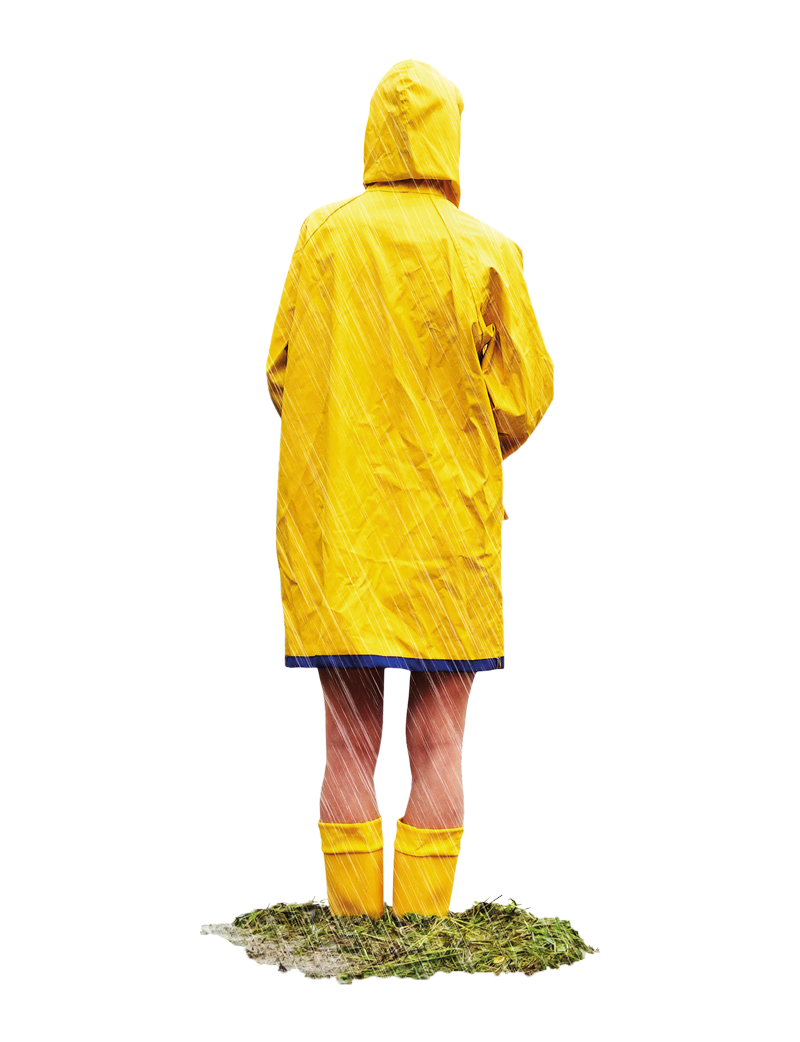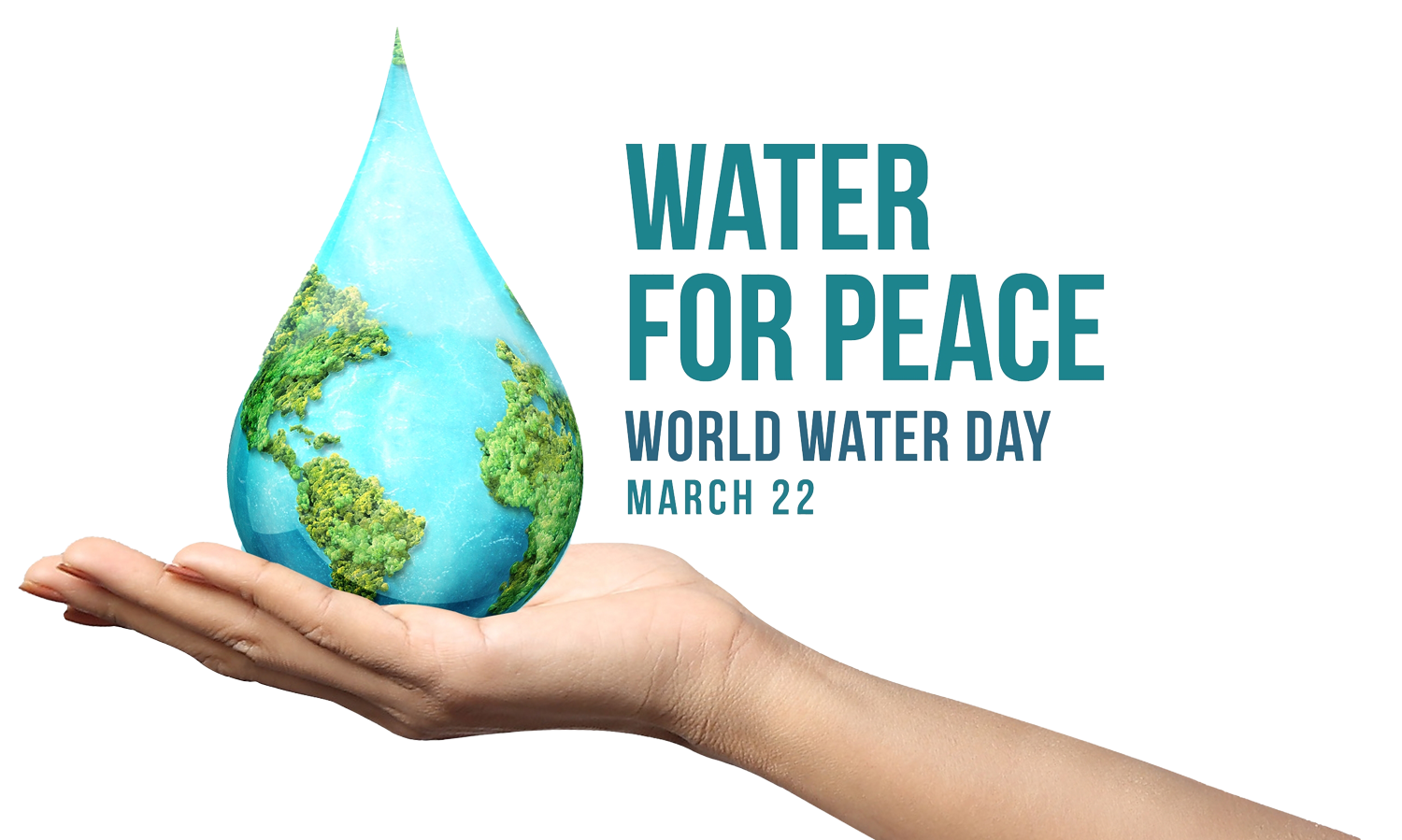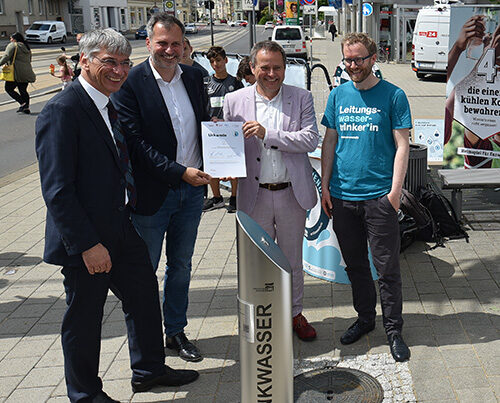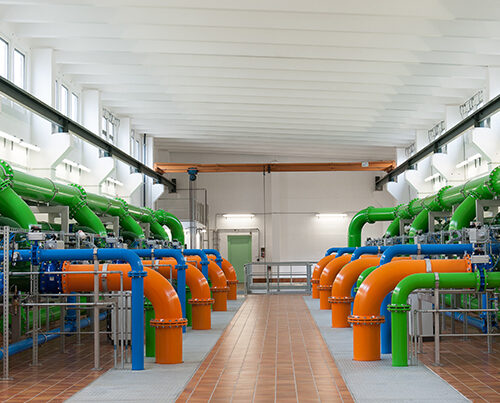The catastrophic floods that hit Western Europe in 2021 cost 220 people their lives – including at least 188 people in Germany and 41 in Belgium. Looking at the number of victims, these floods were Germany’s worst natural disaster since the North Sea flood of 1962.
With the countries hit by these floods suffering huge damage, massive aid and emergency packages had to be made available. Munich RE, the world’s leading reinsurance company, estimated this damage to be 46 billion euros; the figure for Germany alone was put at 33 billion euros. This made it the world’s second-costliest natural disaster in 2021. Only Hurricane Ida caused more damage in that particular year.
Weather experts around the globe agree, for the most part, that extreme weather events (such as severe heat, droughts, intense rainfall and unusually powerful tropical storms) will become increasingly more frequent across the world as a result of man-made global warming. A whole number of climate researchers and IPCC authors (such as Stefan Rahmstorf, Friederike Otto, Sonia Seneviratne, Reto Knutti and Ed Hawkins) and meteorologists (such as Özden Terli, Karsten Schwanke, Sven Plöger and Andreas Friedrich) have put climate change down as the main factor facilitating and intensifying severe storms. In addition to this, the hydrologist Bruno Merz has said that the intensification of the water cycle – a phenomenon not seen in the past – would also make such events more probable, longer-lasting and more extreme in the future. The DWD, Germany’s National Meteorological Service, also published a report following the Ahr valley floods that looked into the weather event that caused this disaster – a report that also ended up giving an assessment of the climate as a whole.
One particularly important factor influencing the size of flood events is that warmer air holds more water, which must eventually fall to the ground as rain. This, combined with a further consequence of global warming, is leading to a significant accumulation of unevenly distributed volumes of rainfall, the like of which has not been seen in this part of the world before. This second consequence of global warming is the intermittent weakening of the jet stream. The slowing down of this core of strong winds in the upper troposphere (a region ca. 8 to 12km above the earth’s surface) is causing weather systems, such as areas of high and low pressure, to remain pretty much in the same place for a long period of time. This intensifies the impact they have on regions, whether it be heavy rainfall, heatwaves or periods of drought. According to a study published in the ‘Geophysical Research Letters’ journal in 2021, severe weather events with serious consequences can be expected to happen far more frequently, as climate change progresses, due to the slow movement and high saturation rate of the low-pressure systems over Europe.

Investing in tomorrow’s smart water management
Rainfall events will, therefore, become more extreme and regions with too much or too little water will become the norm rather than the exception. The fact that the amount of precipitation will remain roughly the same over the long term may be comforting but it also highlights the particular challenges that water infrastructure will have to face. On the one hand, local and district authorities need to be able to provide a stable supply of water during dry periods and long periods of drought. On the other, they must have an infrastructure that can cope with severe rainfall events. And this cannot simply mean safely diverting the volumes of water into the next big river to ensure there is no loss of life and buildings remain undamaged. On the contrary, investments must be made not only to ensure that water is used more efficiently but also to build additional capacities to store the excess water generated by heavy rainfall. This would then make it easier for the regions to get through the next inevitable drought.
People came up with ideas and concepts to do this many years ago as well. Following the severe floods in the Ahr valley back in 1910, plans were drawn up to improve water flow and build additional sewer pipes and storage basins in the vulnerable areas.
Unfortunately, however, the funds put aside for these plans were then used to build the Nürburgring racing track. The water infrastructure in the Ahr valley remained largely unchanged and we all know what this led to 111 years later.
It is clear today that many regions need to completely overhaul their water supply and wastewater treatment infrastructure. And this will require large investments. While just 1.96 billion euros were invested in public water supply in 2007, this figure had already jumped to around 3.4 billion euros in 2021. It will not be possible to handle this herculean task without the help of private investors.
In Germany, it is the task of the public sector to set up the infrastructure needed to supply key public services. Democratically elected committees at local, regional and national level decide what investments and concrete measures are required to achieve this. They are facing some major challenges. The worst possible option, however, would be to choose to do nothing because of a lack of public funds. The future cost of not doing anything now would be astronomical.
The Ahr valley and Erft river floods in July 2021 were the most expensive extreme weather event in Germany’s history causing 33 billion euros of damage. […]
The German government had these costs analysed (which included an analysis carried out by Prognos, an economic research centre and firm of consultants) and wrote: “The costliest extreme weather events in Germany to date have been floods caused by heavy rainfall and rivers breaking their banks. Such events not only impact on buildings and transport but also on industry, commerce and supply chains and have caused damage amounting to at least 70 billion euros since 2000. So-called ‘floods of the century’ are happening more and more often: the Elbe, Danube and Saale rivers in 2002, whole swathes of south, central and north Germany in 2013 and then the Ahr valley in 2021. The Ahr valley and Erft river floods in July 2021 were the most expensive extreme weather event in Germany’s history causing 33 billion euros of damage. […]
And then there are the ‘quiet’ extreme weather events that cause high temperatures and drought. There are fewer studies about them as their impact is often underestimated. The agricultural, woodland management and forestry industries are particularly affected by such events: crop yield loss and the quality and availability of water – the latter is particularly important for maintaining woodland – are two ways used to put a figure on the damage caused. The impact of such events in 2018 and 2019 was estimated to have caused approx. 35 billion euros of damage. Here, too, climate change is the main driver behind the increase in such phenomena.”
Faced with this backdrop, the mathematics for the German economy is glaringly simple: it makes good business sense to invest in measures to adapt the infrastructure if they cost less than the sums needed to cover the damage caused by climate change. Having said this though, contracts to build, operate, maintain and service the plants and facilities must be awarded in a competitive environment so that the best solution is found and implemented at the best price. This is precisely what public private partnerships offering key public services deliver.
Looking at the different types of soils – in Germany, Europe and the world – and the wrong amount of rain falling on the wrong places at the wrong times, then it is also important to think about setting up a system to compensate for this: networks of pipes should be built to transport the volumes of water collected and stored in the wet regions to the dry areas. This might sound visionary but the time has certainly come to plan such systems. If we do not do this, then we can expect to suffer irreparable damage – within 20 years at the latest. Practicable solutions for redistributing water are needed, in particular for arid regions with sandy soils, such as those found in many parts of north Germany. It is time to stop discharging unused water into water courses and ultimately into the sea, where rainwater is transformed into saltwater – from a resource of value for humans to a substance of no value.
Which all means that regional authorities are facing some very big tasks. If falling profits in municipal firms means fewer taxes are collected, then the costs must be covered completely by the public purse, e.g. from public swimming pools, public transport and other public services – something that will push many towns to the limit. It is, therefore, important for local authorities to look for the right partners who can make the most of their operational expertise and experience of providing services to help them master these difficult tasks. Ideally, it should be a reliable partner who is there to stay. REMONDIS has shown in a variety of public private partnerships dedicated to delivering key public services that it is most certainly in it for the long haul. Both in good times and bad.
Ludger Rethmann, CEO of REMONDIS, one of the world’s leading water and circular economy companies, has already described the pathway towards a more cooperative future in a book that he published together with Prof. Michael Schäfer; he is also aware that a number of problems created in the past must also be overcome:
“Anyone arguing in favour of more privatisation in the water management sector inevitably finds themselves being confronted with the large-scale negative examples of the recent past. The privatisation of Berlin’s water company (with its guaranteed interest payments for the investors) and of the British company Thames Water (with its change from a municipal to a regional, private sector monopoly) were unsuccessful for a whole host of reasons. On the one hand, they failed to recognise – or, worst case, ignore – the investments that were actually needed. On the other, it would appear that the guiding principle of these privatisations has been the short-term maximisation of profits to benefit the private sector shareholders. Quite rightly, this purely privately owned, profit-oriented approach has proven to be wrong. We believe that the only viable model for maintaining, preserving and operating water infrastructure in a cost-effective way is to set up public private joint ventures dedicated to delivering these key public services. Such companies cooperate on an equal footing and are generally designed to run over a long-term period. It is precisely for these reasons that companies – in particular high-performing, family-run firms like REMONDIS – should commit themselves and make the most of their know-how and capital to work together with public sector partners to make water supply and wastewater treatment in Germany and Europe fit for the future and ensure it is run cost-efficiently over the long term.
Examples – such as Wasserversorgungs- und Abwasserentsorgungsgesellschaft or WAG, a public private partnership in Schwerin (the capital city of the German state of Mecklenburg-Vorpommern) and the Hagen-based Enervie – Südwestfalen Energie und Wasser AG – clearly demonstrate that such collaborations can work well. The Hanse City of Rostock also benefited from its cooperation with the private sector company EURAWASSER for over 20 years before it made the politically motivated decision to ‘remunicipalise’ the business – a move that led almost immediately to an economic collapse. Once again, this shows that local authorities are well advised to set up public private joint ventures over the long term.”
Sabrina Soussan, president and managing director of the Suez Group, an international water and circular economy business, also stressed the need for public private partnerships (PPPs) during an interview with France TV on 19 January:
“It means more investments, it means more business. PPPs are key here and will bring about change. These subjects will become ever more important and it will be necessary – and this is something I’d really like to underline here – for the public and private sectors to work together. This will simply be a must looking at the sums of money that will have to be invested, otherwise we won’t be able to manage it and won’t be able to make any changes.”
There is a natural aid available to help improve water management. Compost acts as a water-retaining top layer and is able to store up to five times more water per hectare. But that’s not all: the improved soils are also able to retain the water for up to five times longer. What is needed here, though, is for all biogenic waste to be collected from across the country so that it can be sent for ‘cascaded use’, i.e. to produce biogas, fertiliser and structured compost. Unfortunately, there is much room for improvement here in Germany. A number of German local and district authorities still do not provide the households in their regions with organic waste bins even though they are obliged to do this by law. At the beginning of 2023, NABU [German Nature and Biodiversity Conservation Union] published a map that showed which local and district authorities do not provide sufficient numbers of organic waste bins or, indeed, any at all. Looking at the impact climate change is having on our soils, this situation is absolutely unacceptable.
Find out more (German) here.


Looking ahead, water consumption will be a task for the national economy as a whole, whether it be in homes or in industrial plants. The massive challenges that the industrial and municipal water management sectors will have to face over the coming decades will make it all the more important for the public and private sectors to collaborate. The decentralised use of water will play a key role here. Promising approaches are already being implemented today, such as the use of treated water to irrigate agricultural land. The goal here is to use water regionally in the areas where it falls instead of diverting it unused, or even untreated, into rivers and consequently into the saltwater of our seas and oceans.
“The massive challenges that the industrial and municipal water management sectors will have to face over the coming decades will make it all the more important for the public and private sectors to collaborate.”
Sabrina Soussan, President and Managing Director of the Suez Group
Technical innovations are a must – and cost a lot of money
One thing, in particular, that is needed to enable treated water to be used immediately is additional technology, the so-called 4th treatment stage or quaternary treatment, to ensure used water is treated in the best possible way. The 4th treatment stage uses additional technology to filter out micropollutants, such as residual pharmaceuticals and microplastics. Modern sewage treatment plants are already able to remove up to 70% of these trace substances; the rest, however, remains in the treated water. The substances that are the most difficult to remove include residual pharmaceuticals, such as diclofenac (primarily used in analgesic medicines and creams) and X-ray contrast agents. The 4th treatment stage completes the other stages that are already well established, namely preliminary treatment, primary treatment and biological treatment. It does not, however, use one specific type of treatment technology but rather a whole range of different approaches, including ozonation, membrane filtration and activated carbon filtration. A combination of systems is needed to filter out and safely destroy these hard-to-remove trace substances.
The private sector can support local authorities in this area as well, by investing money and helping them to implement projects – from planning the project, to building the facilities, all the way through to operating them. Ideally, the most should be made of the great innovation potential of the private sector here.
A further important step to improving water infrastructure would be to decentralise wastewater treatment. Hospitals, nursing homes and other medical institutions, for example, could be equipped with wastewater pretreatment systems so that any residual pharmaceuticals can be removed from the wastewater on-site before the wastewater is discharged into the public sewer system.
The right political framework conditions must, however, be in place in this area as well, if the necessary innovations and investments are to be made. To begin with, politicians must set the course for the future, long-term, cost-effective and efficient use of water. Some countries have already reacted to their local conditions and revised their laws on how water should be used. In many of India’s new industrial zones, for example, closed loop systems must be installed to ensure all of the water used by the industrial facilities is captured, recycled and reused on site. This big goal is encapsulated in the term ZLD, i.e. zero liquid discharge. No longer should a single drop of water be lost as dirty wastewater; no longer should the environment be polluted and groundwater levels impacted by such water. Such approaches are vital in water-poor countries like India in order to conserve their valuable water resources. As Europe can expect to suffer from more and more droughts in the future, we should also copy such examples and install closed loop systems for our own water resources.
United Nations world water day
The theme for this year’s UN World Water Day on 22 March was ‘Water for Peace’. According to UNICEF, around 2.2 billion people around the world have limited or no access to clean drinking water. One thing is certain here as well: climate change will only make this situation worse. Adapting water infrastructure to the impacts of climate change is expensive but vital.

Perfect examples of successful water projects
This wish to have wastewater-free production operations was what prompted the collaboration between Evonik Catalysts and REMONDIS Aqua. Together, they commissioned a zero liquid discharge facility at its plant in Dombivli, India. In this particular project, REMONDIS Aqua helped this chemicals manufacturer to plan, build and finance the facility. “Modern wastewater management is a key component to overcoming the historical water crises in many regions around the world,” commented Dr Keno Strömer, managing director of REMONDIS Aqua India Pvt. Ltd.
This facility uses a number of different systems to treat the process water, one of which recovers the sodium sulphate from the water so it can be reused by industry as a raw material. One of the main advantages of the facility is that Evonik is less dependent on external water suppliers. What’s more, this sustainable use of water helps protect the environment, further improves the environmental footprint of the company’s industrial production activities and ensures that the process water and the recyclables recovered from it can be efficiently reused.
The ZLD projects in India are acting as a role model all around the world. This system enables less water to be used in production processes and is becoming more and more important on the international stage as companies look to become more sustainable.
A further example is the use of intermediate products. REMONDIS Aqua supplies a manufacturer of activated carbon in the Netherlands with process water. It deploys several different steps here to treat the raw water. Producing pure process water also involves extracting a certain amount of water and this water, i.e. this intermediate product, is supplied to the agricultural sector. This is a further example of how water infrastructure can be adapted to regional conditions.
Among all these private sector innovations to improve the use of scarce water reserves, it is important not to forget that the other side of the coin – the severe rainfall events – means that it is essential to have temporary storage facilities and systems able to divert large volumes of water. What’s more, modern AI-based forecasts are needed to predict when, where and how much rainfall can be expected. Working together with its planning department and water authorities and with REMONDIS Aqua’s support, the German town of Goslar has taken some big steps towards becoming a smart sponge city. Today, Goslar is acting as a role model with its smart flood protection measures.
Image credits: image 1–4: Shutterstock: Juergen Faelchle; image 5: Shutterstock: DOERS












